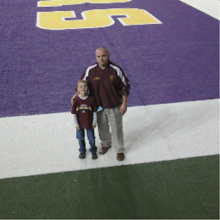Social media is something that has become so prevalent in our culture that I have seen everything from large companies to churches having their own facebook accounts. When I first was presented with the idea that using Twitter, Facebook, or blogging as something in education I was weary of its application. As I have immersed myself in the process, and have seen my own staff and school use this themselves along with students, I have seen some tremendous changes in their practice.
cc licensed flickr photo shared by shareski
I really believe that using technology just to do the same things that we have always done, but on the computer, is not a good enough reason. There has to be more. Thinking aboutthis today, I have really seen some of the impacts that social media is having on education.
1. It’s free. Okay, in reality, nothing is really free. We still have to pay for Internet and technology in our building, but our software costs have gone down significantly. As educators continuously have to deal with budget cuts, it is important that we use tools that do not have a cost on it. Safety is essential, but with teaching Internet safety, setting up certain sites, with a little hard work, the software costs nothing. Our school has paid $300 for server space (for three years) in the last two years that I have been here, and have set up a safe and secure blogging platform for our students. This is music to any educators’ (especially those dealing with budgets) ears.
2. It cuts down on isolation. One of our programs is an off-site building that is out in the country. This program serves 12 students and has two teachers. Every few years, this program is revisited and we ensure that teachers have an opportunity to move so that they have the ability to connectand learn from others. This year when we had the conversation, both teachers did not feel the need to move. They are both connected through many teachers through social networks and the feeling of isolation has somewhat dissipated. Now with small schools that are out in the country, you are never limited to the ideas and camraderie of those in the building, but those that you are willing to connect with. When I first started my career in a small town, it felt very lonely and on some days could be very taxing. The opportunity to connect is there for those who are willing to take it.
3. Building tolerance and understanding of cultural diversity. There are so many different cultures in the world and when I was a kid, we only had read about them in books. There is so much of an opportunity to not only read content from different people and hear their perspectives, but social media gives us the opportunity to actually talk with people. Having the opportunity to connect with people all over the world breaks down a lot of barriers and builds understanding. These are opportunities that we did not have as kids but we need to ensure that our students have this opportunity now.
4. It can amplify passion. Passion is a term that has been used a great deal in education. I am a firm believer that we have to build learning upon the passions and interests of our students. We now have the opportunity to not only connect with people of different cultures, but to people with similar interests. If you watch Chris Anderson’s Ted Talk, he discusses how people can connect with similar interests and create innovation in new areas. He talks about through the use of video, dance has evolved so rapidly because of the ease of sharing. The child who does not feel anyone has similar interests in the classroom, is not limited anymore. We can help to facilitate these connections in schools so our students do not only feel “normal”, but their passion thrives.
5. The world of education is (and needs to be) more open. As an administrator, I need to continuously communicate and connect with not only my stakeholders, but the world of education. Parents no longer need to wonder what I am thinking, because I can share it continuously in an open way. I can do everything from sharing my calendar for the week with our community, to things I am reading. Chris Kennedy, a superintendent in British Columbia, shared everything from his cell phone number to his calendar with the entire world. The parent who may not know the teacher in the next grade, can simply follow their blog to get to know about some of the practices. This breaks down walls and helps to build relationships with families and our community. Parents could not see the other classroom’s “newsletter” unless it was passed around; now it is easily shared. Knowing people beforehand will help to break down barriers that may have existed before.
I have said this many times before, that education is based upon relationships. While people often look at social media is just “technology” we have to see how proper use can help really bring our world together. If we are proactive in the way we work with kids using social media, there is no limit to what we can do.
